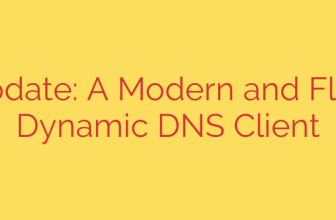
The FileFix Attack: How Hackers Hide Malware on Trusted Cloud Services
In the digital world, trust is everything. We are trained to look for familiar, reputable domains like Google Drive or Dropbox before clicking a link. But what if that trust could be turned into a weapon? A sophisticated new technique, dubbed the FileFix attack, demonstrates how malicious actors can exploit a vulnerability known as cache smuggling to host dangerous files on the very cloud services we rely on, bypassing critical security checks.
This method represents a significant evolution in cyber threats, making it easier for attackers to launch convincing phishing campaigns and deliver malware from seemingly safe sources. Understanding how this attack works is the first step toward building a stronger defense.
What is the FileFix Attack?
The FileFix attack is an exploit that allows a threat actor to upload a malicious file to a secure cloud storage service in a way that evades initial security scanning. The core of the attack lies in manipulating how web servers and caching systems interpret data.
When you upload a file, it typically passes through several layers of security, including web application firewalls (WAFs) and malware scanners. These tools inspect the file to ensure it’s safe. However, the FileFix attack cleverly tricks these systems into scanning a harmless version of the file while the cloud storage saves the full, malicious version.
The ultimate goal is to generate a public link to the malicious file that is hosted on a trusted domain. When a victim clicks this link, they are served the dangerous content directly, completely unaware that the initial security gateways were bypassed.
How Cache Smuggling Makes It Possible
The technical engine behind the FileFix attack is cache smuggling, a variation of a web exploit known as HTTP Request Smuggling. It works by exploiting inconsistencies in how different servers in the chain—like a front-end proxy, a cache server, and a back-end storage server—process HTTP headers.
Here’s a simplified breakdown of the process:
- Crafting the Malicious Request: The attacker sends an HTTP request to upload a file. This request is specially crafted to include two
Content-Lengthheaders. TheContent-Lengthheader tells the server how large the incoming file is. - Tricking the Front-End Security: The front-end server (like a WAF or security scanner) reads the first
Content-Lengthheader. The attacker sets this value to be very small, pointing only to a benign portion of the file. The security tool scans this harmless snippet, finds nothing wrong, and approves the request. - Deceiving the Back-End Server: The request is then passed to the back-end storage server (e.g., the cloud platform). This server, due to different parsing rules, reads the second
Content-Lengthheader. This header points to the entire file size, including the hidden malicious payload. The back-end server then saves the complete, dangerous file. - Poisoning the Cache: The web cache, caught in the middle, becomes “poisoned.” It stores the malicious version of the file associated with the generated URL.
When an unsuspecting user clicks the link, the cache serves the malicious file it has stored. The file appears to come from a trusted source, making the attack incredibly effective.
The Real-World Impact: A New Wave of Phishing
The implications of this attack are significant. By hosting malicious content on trusted domains, attackers can dramatically increase the success rate of their campaigns.
- Highly Convincing Phishing Attacks: An email with a link to a file on
drive.google.comis far less likely to raise suspicion than a link to an unknown domain. Users are more inclined to click, enter credentials, or download files, leading to credential theft and malware infections. - Bypassing Network Defenses: Traditional security measures that scan incoming files at the network perimeter are rendered ineffective. The FileFix attack essentially walks the malicious file right past the guards.
- Erosion of Digital Trust: This technique undermines the fundamental trust users place in major online platforms, making the internet a more dangerous place for everyone.
How to Protect Your Organization
While service providers like Google and Dropbox have reportedly patched the specific vulnerabilities, the underlying technique of cache smuggling remains a threat. Protecting your organization requires a proactive, multi-layered approach.
For Businesses and End-Users:
- Vigilance is Non-Negotiable: Train employees to be cautious of all links and file downloads, even those that appear to come from trusted sources. Verify the sender and the context of the message before clicking.
- Implement Multi-Layered Security: Do not rely solely on network-level firewalls. A robust security posture includes endpoint protection (antivirus/EDR) on all devices. This provides a last line of defense, capable of detecting and blocking malware if it manages to bypass other checks.
- Enhance Phishing Training: Go beyond basic phishing awareness. Educate your team about advanced threats like the FileFix attack, emphasizing that the domain name alone is not a guarantee of safety.
- Restrict Unnecessary File Downloads: Use security policies to control what types of files can be downloaded from the internet, and consider blocking executable files from unknown or unverified sources.
The FileFix attack is a stark reminder that cybercriminals are constantly innovating. As they develop new ways to exploit the very fabric of the web, our security strategies must evolve in response. By staying informed and adopting a defense-in-depth mindset, we can better protect our data and our organizations from these sophisticated threats.
Source: https://www.bleepingcomputer.com/news/security/new-filefix-attack-uses-cache-smuggling-to-evade-security-software/








